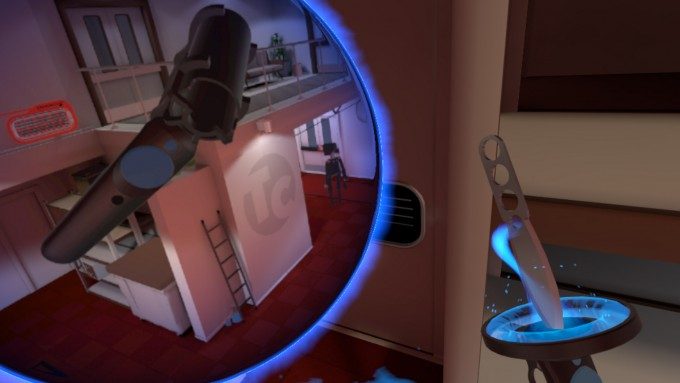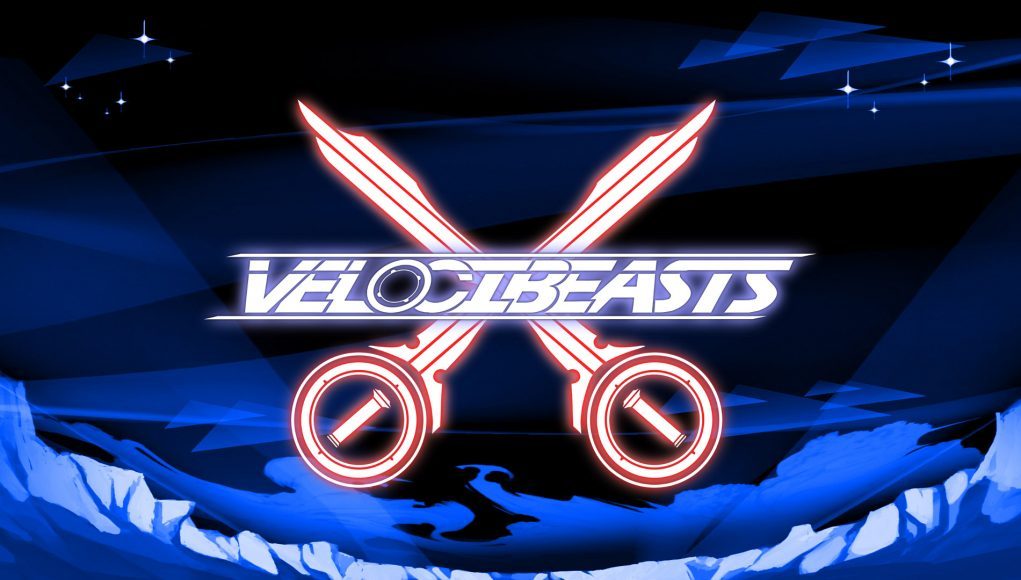Moving around in VR isn’t a solved problem. In 5 years, the best games and experiences won’t be using point-and-click teleportation. At GDC 2017 last week, I saw two promising new types of experimental locomotion in VR. First was Sprint Vector, which greatly surprised me at its comfort, speed, and fun. And then there was VELOCIBEASTS.
The teleporting movement we see in many of today’s VR games is a crutch. We all know how we want to be able to move in VR: quickly, interactively, intuitively, and comfortably. But how is the question. And until we have an answer, many developers are turning to teleportation. But we need experimentation to continue, and thankfully developers like CHURROBOROS are taking on that mantle.
While it’s technically a type of teleportation—which I have issues with as immersion breaker—the locomotion technique in Velocibeasts is moving away from the worse parts of teleportation by adding increased interactivity, more freedom of movement, and direct integration into gameplay.
The game’s method of locomotion doesn’t just get players through a traditional game world, it’s tied directly into how the game is played. In this case, the player’s weapons can be thrown like discs, and the player can teleport to that disc at any time.
This makes Velocibeasts’ locomotion immediately more immersive because it gets your body into the game in a way that lazily pointing your controller and clicking a button does not. Each movement is a conscious choice because you need to do something beyond just deciding where to go—you need to effectively aim your throw in both direction and distance, something you can actually get better at over time with practice, by honing your physical throwing ability
This method also enhances freedom of player movement in a way that point-and-click locomotion cannot; the ability to freely move along the Z-axis. Point-and-click locomotion requires your cursor to intersect with some part of the game world, which defines the Z height of your teleport. With Velocibeasts’ thrown approach, players can quickly and easily teleport themselves 100 feet forward and 50 feet upward, unrestricted by where the game’s geometry is placed. Importantly, as above, this capability feeds back into the gameplay.
When talking about VR locomotion, I always feel it’s important to point this out: Churroboros didn’t invent thrown teleportation. As with all VR locomotion, and just like Survios’ Sprint Vector, they’ve borrowed and remixed other methods and experimented to add their own flavor. This experimentation is healthy and should absolutely continue.
The VR games best making use of teleportation locomotion today are doing the same things as Velocibeasts—ensuring that the locomotion is core to the gameplay and is interactive. And if there’s a narrative, it should be part of that too, not just a crutch to get players through an otherwise normal game world.
 Take Budget Cuts for instance. The lore of the game revolves around the fictional company ‘Trans Corp’ which “develops and refines space-time technology to perfection,” and is equipping spies with their tech to infiltrate competitors. I previously called Budget Cut’s locomotion a “lesson for VR developers:”
Take Budget Cuts for instance. The lore of the game revolves around the fictional company ‘Trans Corp’ which “develops and refines space-time technology to perfection,” and is equipping spies with their tech to infiltrate competitors. I previously called Budget Cut’s locomotion a “lesson for VR developers:”
Navigation is done with a portalling/blinking system, which essentially means you choose where you want to go and you appear there. We’ve seen systems like this before, and they work quite well to allow players to cross large virtual distances without any motion sickness. But without any context, portaling/blinking navigation can seem out of place. Budget Cuts instead makes sense of the system by making it part of the gameplay and the game lore.
It works like this: the player holds two futuristic-looking multi-tools which can be used to grab objects and store inventory items inside of them. The multi-tools can also turn into a teleportation gun by clicking on the thumb-pad of the Vive Pre controller. From here, the player can shoot the portal gun which lobs a blue ball into the world. This ball will bounce off of surfaces until it hits the ground. Once planted, the multi-tool shows a small circular window of the new location on a floating display which can be articulated using your hands. When you want to teleport to the location, you squeeze the side buttons on the Vive controller and the window into the new location envelops you, suddenly transporting you to the new space.
This system is quick and seamless, and smartly ties into the gameplay, grounding it within the world and making it seem sensible rather than out of place. For instance, at certain points in the game you’ll be blocked by a locked door. If, however, you’re able to find a vent which you can fire your portal ball through, then you’ll be able to teleport to the other side even though you couldn’t fit yourself through the vent.
The portal preview window is also useful; you’ll be trying to avoid patrolling robots, and looking through the window to make sure the coast is clear, before actually teleporting, is a must for remaining undetected. In the game you’ll find yourself lobbing the portal ball around corners and then holding the window up to look in every direction before jumping through.
As for Velocibeasts, it’s still quite early. Developer Churroboros says the title is in development with a planned release date at the end of the year. And while I’ve praised the game’s approach to locomotion, I had a fair deal of feedback which I gave to a member of the development team after playing it.
The novel locomotion method is a good step in the right direction and a great seed of an idea, but the present attempt to turn what still feels like an experiment into a full blown multiplayer game feels like a misstep to me.
Even in a basic mouse + keyboard FPS, where all the control and locomotion issues have been long worked out, creating compelling, balanced gameplay is still challenging. Because the experimental locomotion in Velocibeasts is core to its gameplay, finding multiplayer balance for compelling gameplay is going to be doubly hard while continuing to try to hone the locomotion system. Every time the locomotion is tweaked, the balance could be thrown off, and vice versa.
My feeling is that—like Budget Cuts—Churroboros may be better off fleshing out this experimental locomotion and the gameplay therein in a single player game or demo before committing to the challenges of multiplayer.






